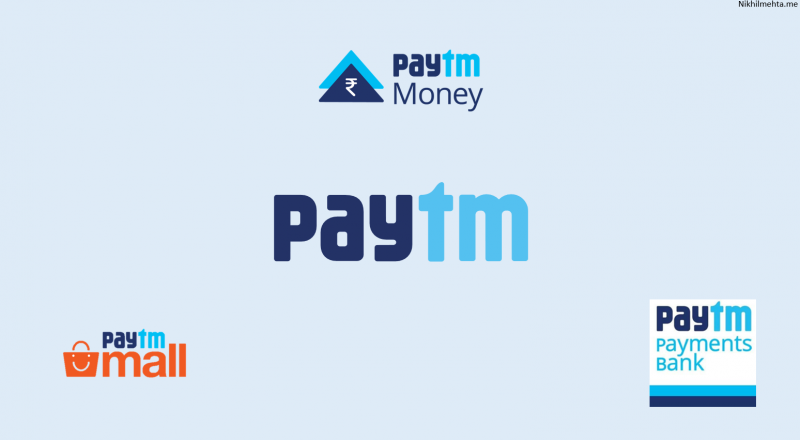Zomato had a resounding success with its IPO. This success will be very encouraging for the upcoming new-age tech companies. Paytm is one of the companies lined up to join the IPO euphoria. Paytm is the highest valued company amongst the Indian startups and shall command high premiums. The question is, what next for Paytm. The company has already achieved scale and is facing stiff competition. Will it be able to become as big as Ant financial? Let’s find out.
History of Paytm
Paytm was founded by Mr. Vijay Shekhar Sharma (VSS) in 2010; as a subsidiary of One97 Communications. VSS had been part of small startups like IndiaSite.net. He started One97 communications in the year 2000. In the early days, One97 focused on being a content platform. One97 shifted its focus to digital wallets called Paytm in 2010. Their digital wallet became an instant success because of the first-mover advantage and the cashback schemes. With their Android app, users could make payments of the exact amount. This app practically eliminated the need to carry a wallet or authenticate on various devices. As a result, Paytm became a familiar brand, thanks to its name which sounded similar to ATM.
Historic moments for Paytm
Paytm’s journey so far can be highlighted in three significant events. The first one was in its early days when Uber collaborated with Paytm for payments. Uber never wanted to accept cash payments. The number of cardholders in India was limited. By collaborating with a digital wallet like Paytm, payment was guaranteed for the rides. Customer acquisition for Paytm became easy by collaborating with a global giant.
The second significant event was the launch of UPI. The advent of UPI and the launch of Google Pay (erstwhile Google Tez); had a lasting impact on the payments industry. Digital wallets with the relaxed KYC norms started to become irrelevant; UPI now took the front seat. Paytm did face stiff challenges with the marketing blitz of Google Pay. The third major event of Demonetization happened. 8th November 2016 is a historic date, which Indians shall never forget. With all hard cash dried up, Indians had to fall back on digital transactions. As a result, digital payments became the norm for small Kirana stores as well. Paytm used this opportunity by advertising and to get back to the competitive battlefield of payment space.
Paytm’s success can be attributed to its implementation of Nir Eyal’s hooked model. It rewards small actions of mobile recharges by cashback. This cashback was deposited back to the customer’s digital wallets. Because of this residual amount in wallets, users would keep coming back to its platform. Paytm also ensured that the withdrawal from these wallets had barriers of charges. These charges forced users to retain the balance and utilize the wallet as and when possible. Further, Paytm targeted use cases like paying at cafeterias and transportations, which provided more avenues for the customers to use Paytm. This helped improve the overall stickiness.
Paytm as of Today
Paytm allows users to send money to friends, settle bills, buy groceries, book tickets and open a bank account. It has about 450 million registered users and 130 million active users. Approx 90% of the user base is in the age group of 16 to 24. 70% of their user base is android based. Fastag, another significant digital change in India, has led to about 6 million installations. Paytm is on its way to processing $3.5 billion in payments and money transfers. Paytm undoubtedly is the torch-bearer of payments in India. It boasts of some greatest investors of the century, like Softbank, Alipay, and Warren Buffett. Alipay, through the IPO, would be exiting the company.
Paytm is targeting a $3 Billion IPO equating roughly to an offering of 20000 Crores INR. Despite its steep valuations, there are investors keen to invest in Paytm, considering its long-term prospects. For Paytm to provide a decent rate of return, it will continue to expand and become as big as global giants like Stripe or AliPay.
What is Alipay afterall?
Jack Ma, the founder of Alibaba, founded various companies like AliExpress, Tmall, Taobao, AliOS, Alibaba cloud, etc. This was all with the backing of Softbank. Jack Ma identified the opportunity of payments for all his ventures. He started AliPay, which can become the payment mechanism for all his e-commerce entities.
Alipay started off just as a payment gateway. However, they went on to become a single hub for all investments opportunities as well. Alipay has over 700 Million active users and completed over $8 trillion in transactions in 2017, equivalent to 65% of China’s GDP. Alipay commands a valuation of over $150 billion, 50% higher than Goldman Sachs. It also owns and operates an open insurance marketplace with over 80 insurance companies on the platform that reaches over 400 million users. All of China’s 116 mutual fund managers are on a platform with a potential reach of 180 million users. AliPay was renamed as Ant Financials, basis its expansion in various wealth segments. Ant Financial has become the go-to platform for China.
Will Paytm become as big as Ant Financial?
Ant financial is more or less dominating the payments landscape in China along with Tencent. Both Alipay and Tencent are profitable and have forayed into multiple businesses across geographies. Paytm, on the other hand, is as of now focused on India operations. They face a stiff challenge from Google Pay, PhonePe, and even WhatsApp pay. For Paytm to stay relevant, it will continue to have to spend on marketing. Currently, it does spend heavily on cricket campaigns, which address large audiences and gains enough eyeballs. For Paytm becoming an equivalent of Alipay, it could target either higher ticket size payments or dig deeper in e-commerce or become the investment hub for individuals.
All three spaces of payments, e-commerce, and investments have stiff competition. Paytm faces behemoths like Google pay and Phonepe. Amazon and Flipkart lead the e-commerce competition front. Zerodha and other discount firms are making strides in the investments space. For Paytm to make a mark, it will have to make it really big in one of the spaces. Alternatively, it could continue to expand in all three verticals and expand geographically.
Either way Paytm will have to take its game to the next level. Alipay created a strong presence in all segments and forayed into other geographies as well. Paytm has achieved tremendous success with its platform and is at an inflection point. It can leverage existing data and become a brand with a significant lasting business.





